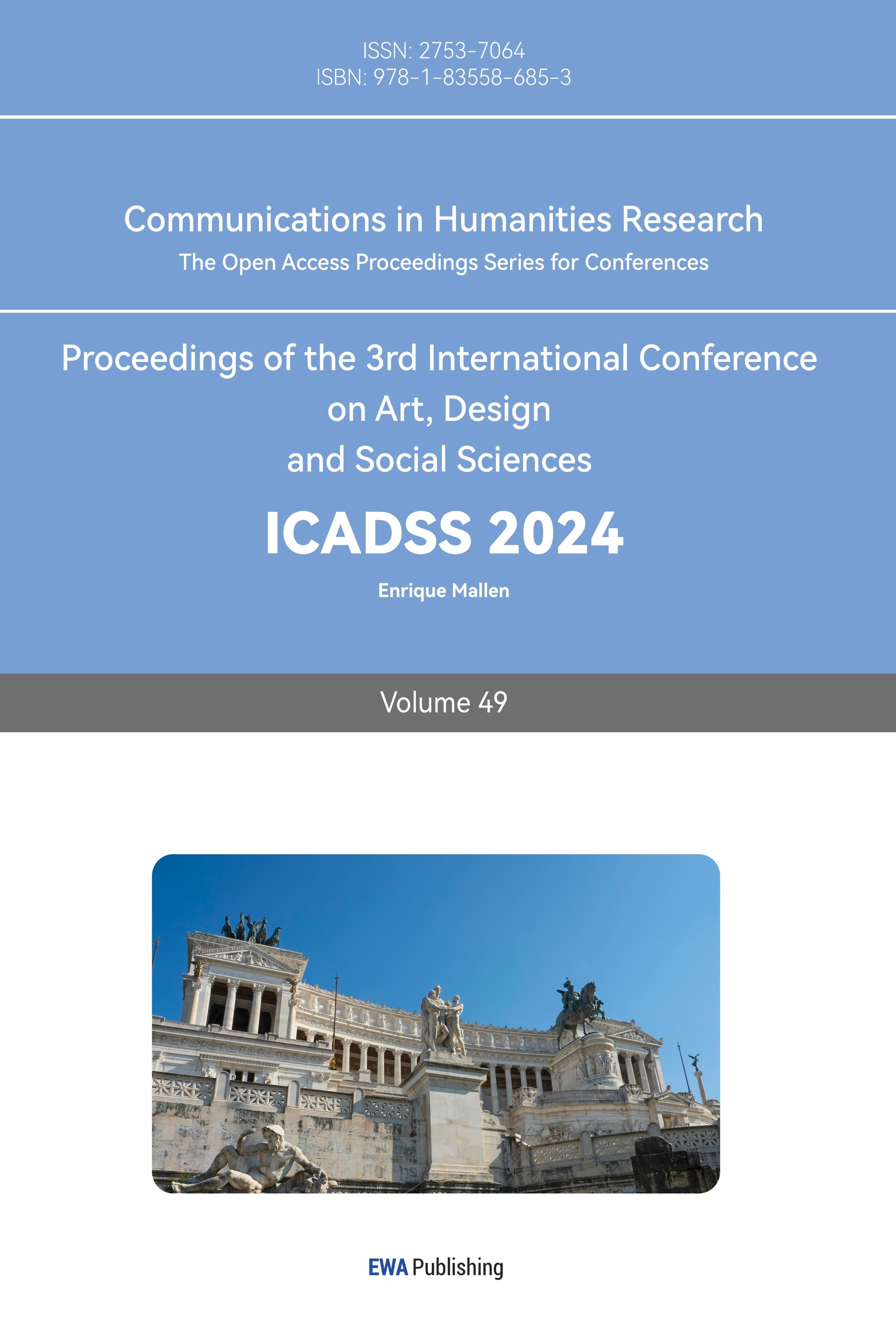1. Introduction
With rapid advancements in digital technology and evolving social culture, art exhibitions have shifted significantly, moving from static displays rooted in the "white cube" model to interactive, participatory experiences. Audiences now seek more immersive encounters with art, reflecting a transformation in their expectations. Traditional gallery and museum spaces, characterized by stark white walls, were designed to emphasize the independence of artworks. However, while these settings heightened artistic expression, they also created a sense of detachment, limiting audience interaction and immersion. Interactive exhibitions aim to bridge this gap, encouraging visitors to become active participants rather than passive observers. This paper examines how such exhibitions, including Cao Fei's Tidal Flux, enhance audience engagement through interactive design, analyzing the use of space, sound, and participatory elements to foster a deeper connection between art and everyday life.
2. Characteristics and Limitations of Traditional Art Exhibitions
2.1. The "White Cube" Model and Its Limitations
The "white cube" model has dominated contemporary art exhibitions, emphasizing static displays that highlight the autonomy of the artwork but reduce the audience to a passive role. Whitney Birkett, in To Infinity and Beyond: A Critique of the Aesthetic White Cube, describes how this model uses plain white walls, polished floors, and controlled lighting to focus attention solely on the art [1]. While this minimalist setting enhances the works' formal qualities, it isolates them from everyday life, limiting interaction and immersion. Tu Rongrong argues in The Connection Between Exhibition Spaces and Artworks in Contemporary Art that the "white cube" abstracts the art from its context, increasing the distance between the viewer and the artwork [2]. Although this model has successfully highlighted formal aspects of art, it restricts dynamic engagement, preventing deeper connections. In contrast, interactive exhibitions now blur the boundaries between viewer and participant, using gamified and real-life designs to foster immersive experiences and transform the exhibition space into a "third space" where art and life intersect.
Case Study 1: Andy Warhol—From A to B and Back Again

Figure 1: Andy Warhol: From A to B and Back Again [3].
The Andy Warhol—From A to B and Back Again exhibition, held from May 19 to September 2, 2019, at SFMOMA, spanned three floors and marked the first major U.S. retrospective of Warhol’s work since 1989 (Figure 1). It showcased his extensive career and highlighted his engagement with social issues beyond the surface glamour of his art [4]. While some walls featured rich printed decorations, these embellishments could not break the limitations of the "white cube" exhibition space. Art critic Karen E. Jones argued that the exhibition's "Time Capsule" approach led to an overwhelming amount of material without a clear organizing structure [5]. Spatially, the exhibition's chaotic feeling stemmed from the excessive use of the "white cube" space, where the sheer number of artworks against the white walls provided too much information without sufficient direction. Though Tu Rongrong has noted that clean, minimalist spaces allow art to be fully expressed [2], the primary focus of this exhibition—historical education—required a more narrative-driven design. While the white walls highlighted individual pieces, they failed to fully utilize the environment to support storytelling and educational interpretation.
Case Study 2: Greater New York 2021
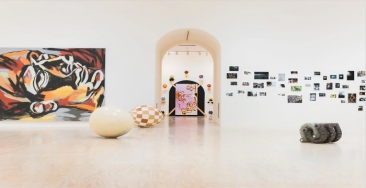
Figure 2: Greater New York 2021[6].
Greater New York 2021 at MoMA PS1 marked the fifth iteration of the museum's signature exhibition (Figure 2), showcasing 47 artists and collectives from New York City. Delayed by a year due to the COVID-19 pandemic, this edition highlighted lesser-known histories of artistic production in the city, exploring contemporary and historical narratives through diverse practices, including documentary, surrealism, and fabulation [7]. Although this year's exhibition featured fewer artists, art critic R.H. Lossin noted that it suffered from thematic and stylistic incoherence, resulting in a fragmented display [8]. Both Greater New York 2021 and Andy Warhol—From A to B and Back Again received criticism for narrative confusion and unclear themes, issues I attribute to the overuse of the "white cube" exhibition format. Whitney Birkett points out that the "white cube" encourages a detached, almost reverential approach to viewing art, which diminishes emotional and intellectual engagement [1]. As a series focused on New York’s artistic and cultural expression, Greater New York should not have distanced itself from the artists' lived experiences. Instead, the extensive use of "white cube" spaces caused a disconnect between the audience and the artwork, neglecting the cultural and atmospheric context essential for a deeper understanding.
The article The Dilemma of Interactive Art Museum Spaces addresses the challenges traditional exhibition environments face, particularly their lack of interactivity and immersion. Conventional exhibitions often emphasize authority and maintain a quiet atmosphere, but this setup limits audience engagement, especially for interactive artworks that require participatory environments [9]. In both exhibitions discussed, the primary barrier to meaningful interaction was the absence of clear information and logical coherence in the "white cube" spaces. While the "white cube" format has advantages in highlighting the formal aspects of artworks, it tends to sanctify the pieces by focusing excessively on order and silence, limiting the narrative and spatial elements essential for emotional resonance and connection. This often leads to logical confusion for viewers. Tu Rongrong's research shows that although the "white cube" model is effective for emphasizing the formal language of artwork, it neglects the interactive needs of the audience, providing theoretical support for the rise of interactive exhibitions [2]. When the "white cube" is defined as the standard exhibition space for contemporary art, shouldn't we consider whether interactive and experiential art requires a more suitable stage and display?
3. The Design and Application of Interactive Exhibitions: A Case Study of Cao Fei: Tidal Flux
Tidal Flux was Cao Fei’s first large-scale mid-career retrospective in Shanghai, which took place at the Pudong Museum of Art. The exhibition explored themes of "time," "the body," and "technology," showcasing Cao Fei's extensive media art practices through a combination of video and spatial design. Divided into ten distinct spaces, each section presented a unique narrative related to her projects. Consistently reflecting her profound observations of contemporary Chinese society, Cao Fei’s work is rooted in the country's economic development and technological innovation, often constructing futuristic visions [10].
3.1. Field Research and Interactive Analysis
In field research, the author observed that the audience's behavior in Cao Fei: Tidal Flux differed from that in traditional exhibitions. Most of the conversations in the exhibition were not about the artworks but about daily life. For instance, one couple discussed financial investments before a video installation, while another group of viewers compared the actress in the film to someone they knew. These observations led to the question: Why were the viewers so relaxed and naturally conversing during this exhibition?
3.2. Functional Design of “Chairs” and “Sound”
The design of the exhibition was integral to creating a casual, everyday atmosphere that encouraged interaction. The "chairs" symbolized comfort and domesticity, while the "sound" provided a sense of privacy and inclusiveness. As Liu Hanning and Xu Yifang argue in Research on the Application of Gamification Theory in Urban Space, humanized interactive spaces invite voluntary engagement from the audience, enhancing both the appeal and interactivity of exhibitions [11]. In Cao Fei: Tidal Flux, visitors were invited to relax and feel at ease, sitting on familiar seating options like long benches, park chairs, and yoga balls rather than the luxurious sofas often found in traditional exhibitions. This familiar design fostered conversation and interaction with the artworks. A notable example was the red plastic chair, a common factory item, paired with the Asia One Project, a film installation about a parcel sorting center (Figure 3)[10]. By integrating such a simple yet contextually meaningful object, the exhibition encouraged visitors to interact with the space in a more natural, relatable way.

Figure 3: Asia One Project [10].
The challenges of curating new media art lie in utilizing interactive technology to enhance exhibitions and foster deeper emotional and cognitive engagement with audiences [12]. A distinctive feature of the Cao Fei: Tidal Flux exhibition was its innovative sound design. Unlike the quiet atmosphere of traditional exhibitions, the sounds from different works filled the space, fostering a sense of security and encouraging visitors to freely interact without fear of disturbing the environment. Additionally, the exhibition featured small, intimate spaces designed to promote communication. As Li Xiaojun and Cui Tianjian discuss in The Exploration of Playfulness in Public Space Landscape Design, playful and interactive spaces enrich the sensory experience and strengthen emotional connections among audiences [13]. This “noisy” environment, which simulates daily life, challenged the traditional "white cube" format by breaking the divide between art and the audience. In Figure 4, an example is Screen Autobiography (Shanghai), which incorporated multimedia devices and video elements in a bedroom-like space surrounded by fabric, creating a private and comfortable setting that facilitated interaction between the artist and viewers [10].
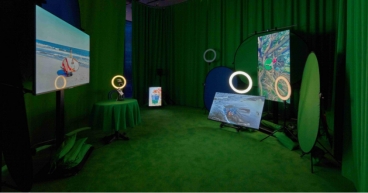
Figure 4: Screen Autobiography (Shanghai) [10].
As Bergdoll notes in Art History and the "Blockbuster" Exhibition, the integration of sound and space within an exhibition enhances the narrative, helping viewers to grasp the historical and cultural contexts of the artworks [14]. Similarly, the author of Interactive Experiences and Contextual Learning in Museums highlights how interactive exhibitions can deepen audience engagement by fostering emotional connections and promoting learning through multi-sensory experiences [15]. Exhibitions, as argued in The Exhibition as Curriculum: Doing Art History, function as both display spaces and educational tools, offering audiences new cognitive experiences through interaction and contextualized learning [16]. The Cao Fei: Tidal Flux exhibition exemplifies this educational potential, using narrative and interactive elements to create a layered learning environment. Through works like Hong Xia (Figure 5), which reconstructed the interior of a demolished cinema from the early People's Republic of China, visitors were able to immerse themselves in the cultural and historical memories that shaped the piece, gaining a deeper understanding of the social issues it addresses [10].
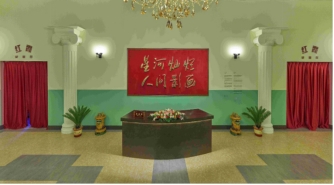
Figure 5: Hong Xia [10].
Cao Fei: Tidal Flux effectively used "chairs" and "sound" to shape the sense of scene and domesticity within the exhibition. This novel approach to exhibition display offers a new choice for the narrative of contemporary art exhibitions, establishing a scenographic, narrative-driven, and life-oriented exhibition storytelling format.
4. Reflection
However, the “cube” exhibition style should not be entirely dismissed, as it remains effective in shaping audience participation when used to display a single artwork. For instance, Ragnar Kjartansson: The Visitors is a video installation that places viewers in a completely dark “cube” space (Figure 6), where large video projections and immersive sound systems envelop the senses [17]. This focused design amplifies the atmosphere and immerses the audience fully in the artwork. The confined space and sensory intensity demonstrate how the "cube" format can successfully enhance the impact of a singular piece, emphasizing its emotional and atmospheric depth.
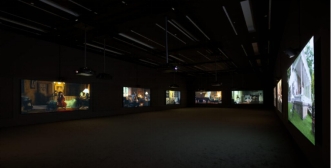
Figure 6: Ragnar Kjartansson: The Visitors [17].
5. Conclusion
The evolution of contemporary art exhibitions should gradually move away from the limitations of the traditional "white cube" model, which has long dominated visual art presentation. Originally designed to emphasize the autonomy and formal qualities of artworks, this minimalist and neutral setting often isolates art from its broader context. As contemporary art increasingly focuses on interactivity, audience participation, and engagement, the "white cube" struggles to foster meaningful connections between artworks and viewers. Its narrative potential is limited, unable to support art that requires immersive atmospheres, scenographic elements, or rich textual content for deeper engagement and broader dissemination. This limitation restricts the level of audience involvement and emotional resonance. Innovative exhibition formats are essential to encourage greater viewer participation. Cao Fei's Tidal Flux demonstrates this shift, with interactive elements such as chairs, sound systems, and scenographic layouts transforming the exhibition space into an inclusive environment. Visitors interact with both the art and the space, blurring the boundary between the artistic and the everyday. This approach enhances personal involvement, creating a more relaxed and open atmosphere that fosters emotional connections and a deeper understanding of the artwork. Looking ahead, future exhibition designs should continue to experiment with interactive elements that break free from the "white cube" tradition. By integrating art more closely with everyday experiences and making it accessible to a broader audience, contemporary exhibitions can play a more significant role in education and society, offering spaces where art is not just observed but experienced on multiple sensory and emotional levels.
References
[1]. Birkett W.F. To infinity and beyond: a critique of the aesthetic white cube [master's thesis]. South Orange, NJ: Seton Hall University, 2012.
[2]. Tu R.R. The connection between exhibition spaces and artworks in contemporary art. Contemporary Art and Exhibition Spaces. 2019 Nov; 319:112-115.
[3]. MinnieMuse. Andy Warhol—From A to B and Back Again [Internet]. Available from: https://www.minniemuse.com/musts/see/andy-warhol-from-a-to-b-and-back-again
[4]. Andy Warhol—From A to B and Back Again [Internet]. San Francisco Museum of Modern Art (SFMOMA). Available from: https://www.sfmoma.org/exhibition/andy-warhol-from-a-to-b-and-back-again/
[5]. Jones KE. Andy Warhol—From A to B and Back Again. ArtCritical [Internet]. 2019 Jun 4. Available from: https://artcritical.com/2019/06/04/karen-e-jones-on-andy-warhol/
[6]. Rosenberg K. Review: Greater New York 2021 at MoMA PS1. The New York Times [Internet]. 2021 Oct 7 [cited 2024 Oct 3]; Available from: https://www.nytimes.com/2021/10/07/arts/design/greater-new-york-moma-ps1.html
[7]. Museum of Modern Art (MoMA). Greater New York 2021 at MoMA PS1 [Internet]. Available from: https://www.moma.org/calendar/exhibitions/5352
[8]. Lossin RH. Greater New York 2021 at MoMA PS1. E-Flux [Internet]. Available from: https://www.e-flux.com/criticism/426293/greater-new-york
[9]. Adams M, Moreno C, Polk M, Buck L. The dilemma of interactive art museum spaces. Art Educ. 2003 Sep; 56(5):42-52.
[10]. Cao Fei. Cao Fei: Tidal Flux. Museum of Art Pudong [Internet]. https://www.museumofartpd.org.cn/exhibitiondetail?id=183
[11]. Hanning Liu, Yifang Xu. Research on the application of gamification theory in urban space. [J] New Architecture, 2020 February, pp.67-71.
[12]. Cook S. On curating new media art. In: Noordegraaf J, Saba CG, Le Maître B, Hediger V, editors. Preserving and exhibiting media art: challenges and perspectives. Amsterdam: Amsterdam University Press; 2013. pp. 389-393.
[13]. Li X., Cui T. The exploration of playfulness in public space landscape design. Southeast Univ Art Coll J. 2016;(10):118-119.
[14]. Freedberg S.J., Jackson-Stops G., Spear R.E. On “Art history and the 'blockbuster' exhibition”. Art Bull, CAA, 1987 Jun;69(2):295-298. Available from: https://doi.org/10.2307/3051024.
[15]. Chang E.J. Interactive experiences and contextual learning in museums. Studies in Art Education, Vol. 47, No.2 (Winter, 2006), pp.170-186.
[16]. Ann E. Calvert. The exhibition as curriculum: doing art history. Visual Arts Research, Vol. 18, No. 2 (Fall 1992), pp. 74-81.
[17]. Katherine Du Tiel. Ragnar Kjartansson: The Visitors. San Francisco Museum of Modern Art. San Francisco (CA): SFMOMA; [cited 2024 Oct 3]. https://www.sfmoma.org/exhibition/ragnar-kjartansson-the-visitors
Cite this article
Xu,Y. (2024). From Tradition to the Future: Exploring Artistic Presentation in Contemporary Interactive Exhibitions. Communications in Humanities Research,49,69-75.
Data availability
The datasets used and/or analyzed during the current study will be available from the authors upon reasonable request.
Disclaimer/Publisher's Note
The statements, opinions and data contained in all publications are solely those of the individual author(s) and contributor(s) and not of EWA Publishing and/or the editor(s). EWA Publishing and/or the editor(s) disclaim responsibility for any injury to people or property resulting from any ideas, methods, instructions or products referred to in the content.
About volume
Volume title: Proceedings of the 3rd International Conference on Art, Design and Social Sciences
© 2024 by the author(s). Licensee EWA Publishing, Oxford, UK. This article is an open access article distributed under the terms and
conditions of the Creative Commons Attribution (CC BY) license. Authors who
publish this series agree to the following terms:
1. Authors retain copyright and grant the series right of first publication with the work simultaneously licensed under a Creative Commons
Attribution License that allows others to share the work with an acknowledgment of the work's authorship and initial publication in this
series.
2. Authors are able to enter into separate, additional contractual arrangements for the non-exclusive distribution of the series's published
version of the work (e.g., post it to an institutional repository or publish it in a book), with an acknowledgment of its initial
publication in this series.
3. Authors are permitted and encouraged to post their work online (e.g., in institutional repositories or on their website) prior to and
during the submission process, as it can lead to productive exchanges, as well as earlier and greater citation of published work (See
Open access policy for details).
References
[1]. Birkett W.F. To infinity and beyond: a critique of the aesthetic white cube [master's thesis]. South Orange, NJ: Seton Hall University, 2012.
[2]. Tu R.R. The connection between exhibition spaces and artworks in contemporary art. Contemporary Art and Exhibition Spaces. 2019 Nov; 319:112-115.
[3]. MinnieMuse. Andy Warhol—From A to B and Back Again [Internet]. Available from: https://www.minniemuse.com/musts/see/andy-warhol-from-a-to-b-and-back-again
[4]. Andy Warhol—From A to B and Back Again [Internet]. San Francisco Museum of Modern Art (SFMOMA). Available from: https://www.sfmoma.org/exhibition/andy-warhol-from-a-to-b-and-back-again/
[5]. Jones KE. Andy Warhol—From A to B and Back Again. ArtCritical [Internet]. 2019 Jun 4. Available from: https://artcritical.com/2019/06/04/karen-e-jones-on-andy-warhol/
[6]. Rosenberg K. Review: Greater New York 2021 at MoMA PS1. The New York Times [Internet]. 2021 Oct 7 [cited 2024 Oct 3]; Available from: https://www.nytimes.com/2021/10/07/arts/design/greater-new-york-moma-ps1.html
[7]. Museum of Modern Art (MoMA). Greater New York 2021 at MoMA PS1 [Internet]. Available from: https://www.moma.org/calendar/exhibitions/5352
[8]. Lossin RH. Greater New York 2021 at MoMA PS1. E-Flux [Internet]. Available from: https://www.e-flux.com/criticism/426293/greater-new-york
[9]. Adams M, Moreno C, Polk M, Buck L. The dilemma of interactive art museum spaces. Art Educ. 2003 Sep; 56(5):42-52.
[10]. Cao Fei. Cao Fei: Tidal Flux. Museum of Art Pudong [Internet]. https://www.museumofartpd.org.cn/exhibitiondetail?id=183
[11]. Hanning Liu, Yifang Xu. Research on the application of gamification theory in urban space. [J] New Architecture, 2020 February, pp.67-71.
[12]. Cook S. On curating new media art. In: Noordegraaf J, Saba CG, Le Maître B, Hediger V, editors. Preserving and exhibiting media art: challenges and perspectives. Amsterdam: Amsterdam University Press; 2013. pp. 389-393.
[13]. Li X., Cui T. The exploration of playfulness in public space landscape design. Southeast Univ Art Coll J. 2016;(10):118-119.
[14]. Freedberg S.J., Jackson-Stops G., Spear R.E. On “Art history and the 'blockbuster' exhibition”. Art Bull, CAA, 1987 Jun;69(2):295-298. Available from: https://doi.org/10.2307/3051024.
[15]. Chang E.J. Interactive experiences and contextual learning in museums. Studies in Art Education, Vol. 47, No.2 (Winter, 2006), pp.170-186.
[16]. Ann E. Calvert. The exhibition as curriculum: doing art history. Visual Arts Research, Vol. 18, No. 2 (Fall 1992), pp. 74-81.
[17]. Katherine Du Tiel. Ragnar Kjartansson: The Visitors. San Francisco Museum of Modern Art. San Francisco (CA): SFMOMA; [cited 2024 Oct 3]. https://www.sfmoma.org/exhibition/ragnar-kjartansson-the-visitors





